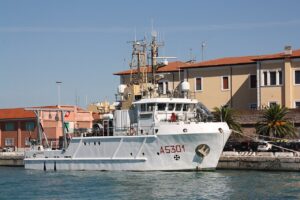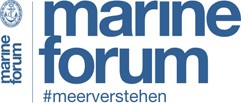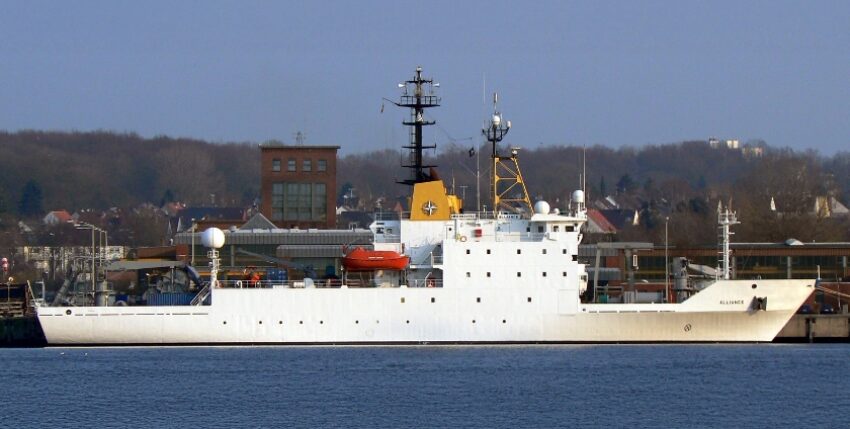The defence research vessel ALLIANCE (A 5345), which belongs to the NATO research centre Centre for Maritime Research and Experimentation (CMRE), was used to experimentally investigate methods for protecting underwater infrastructure in the Baltic Sea. To this end, scientists deployed state-of-the-art acoustic sensors off the Danish island of Bornholm and, for the first time since joining NATO, in Finnish and Swedish waters.

The aim was to determine whether the sensor technology could help NATO allies to recognise acts of sabotage on underwater pipelines and data cables at an early stage and respond to them quickly. This research thus supports the development of tools to detect, track, assess and defend against such threats in real time. One important and successfully completed series of tests, for example, involved using ballast anchors to reproduce the acoustic signature of an anchor hitting the seabed. It is now planned to merge this signature with a NATO ship tracking tool, which will then trigger an alarm. "Lost anchors" are currently a common method of destroying marine infrastructure. At least that is what the incidents in recent years show.
Background
The CMRE is a NATO service and has been researching military aspects of the sea from the Mediterranean to the Arctic for more than 65 years, with a focus on waterborne noise. The agency is based in the Italian city of La Spezia, which is also home to the two research vessels. The ships are operated by the Italian Navy.
The "Alliance" (93 metres long, ice-class) was built by the Italian shipyard Fincantieri from 1984 and entered service in 1988. At the time, it was considered to be the quietest motorised surface vessel in the world, ideal for measurements and tests in the field of hydroacoustics.
The "Leonardo" (A 5301, 28 metres long) was built in 2002 at the British shipyard McTay Marine and is propelled by two Schottel rudder propellers. The ship also has a bow thruster. This makes it the smallest research vessel in the world to be equipped with a computer-controlled system for dynamic positioning, i.e. it can automatically maintain its position without anchoring.
kdk, SWZ-Maritime, CMRE










